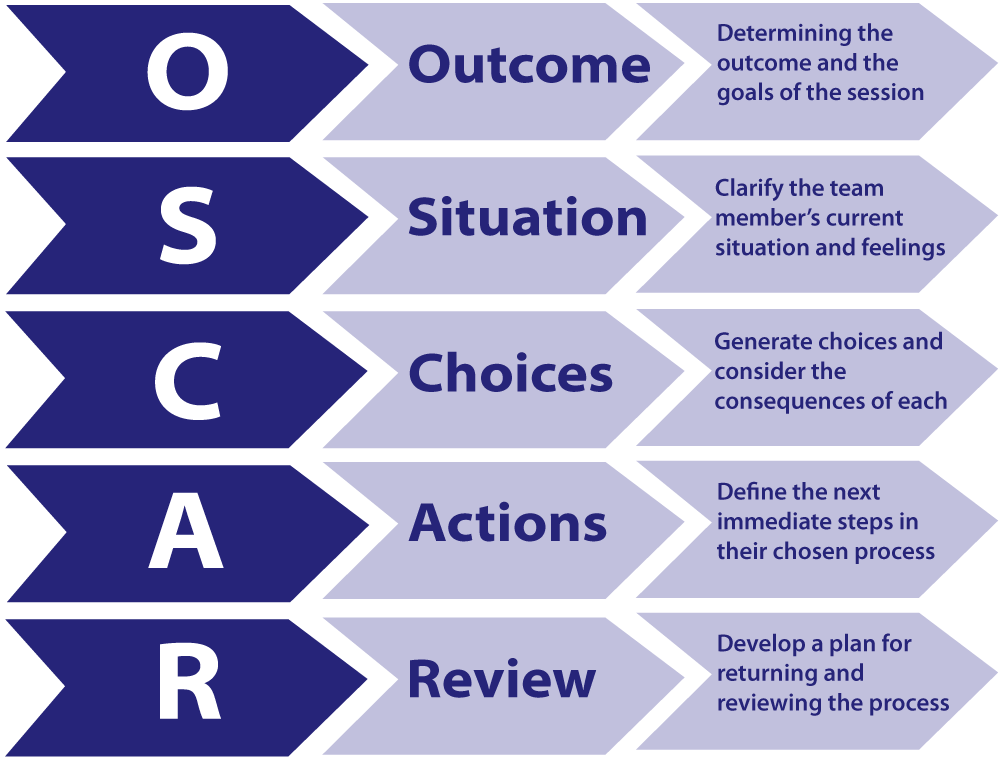The OSCAR model is a framework used to help ensure that objectives are completed successfully. It stands for:
- Outcome – Define the outcome
- Situation – Define the current situation
- Choices – Generate choices
- Actions – Define actions
- Review – Review
By using the OSCAR model, project managers can establish a clear framework for planning, executing, and monitoring projects. It helps in identifying key elements upfront and addressing them throughout the project lifecycle, ultimately increasing the likelihood of project success.


